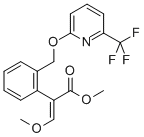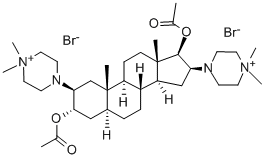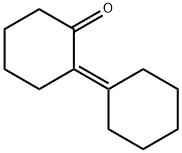Picoxystrobin , Analysis standard , 117428-22-5
Synonym(s):
Methyl (E)-α-methoxymethylene-2-(3-trifluoromethyl-2-pyridyloxymethyl)phenylacetate
CAS NO.:117428-22-5
Empirical Formula: C18H16F3NO4
Molecular Weight: 367.32
MDL number: MFCD04112618
EINECS: 601-478-9
| Pack Size | Price | Stock | Quantity |
| 100MG | RMB311.20 | In Stock |
|
| 1G | RMB2495.20 | In Stock |
|
| 5G | RMB12455.20 | In Stock |
|
| 25G | RMB62247.20 | In Stock |
|
| others | Enquire |
PRODUCT Properties
| Melting point: | 75° |
| Boiling point: | 453.1±45.0 °C(Predicted) |
| Density | d20 1.4 |
| vapor pressure | 34hPa at 20℃ |
| storage temp. | Store at -20°C |
| solubility | DMSO : 100 mg/mL (272.24 mM; Need ultrasonic) |
| pka | -1.09±0.24(Predicted) |
| form | Solid |
| color | Light yellow to brown |
| Water Solubility | 3.25mg/L at 20℃ |
| Stability: | Hygroscopic |
| LogP | 3.68 at 20℃ |
| EPA Substance Registry System | Benzeneacetic acid, .alpha.-(methoxymethylene)-2-[[[6-(trifluoromethyl)-2-pyridinyl]oxy]methyl]-, methyl ester, (.alpha.E)- (117428-22-5) |
Description and Uses
Picoxystrobin (methyl (E)-3-methoxy-2-[22(6-trifluoromethyl- 2-pyridyloxymethyl)phenyl]acrylate from Zeneca Agrochemicals (now Syngenta Crop Protection) was first described by Godwin et al. (33), and is being developed for broad-spectrum control of cereal diseases. The redistribution properties of the molecule, which combine xylem systemicity and vapor phase activity, are considered important in achieving high levels of control of a range of diseases. Picoxystrobin has favorable safety and environmental profiles, and enhances grain yield and quality.
Agricultural fungicide.
Safety
| Symbol(GHS) |   GHS07,GHS09 |
| Signal word | Warning |
| Hazard statements | H332-H410 |
| Precautionary statements | P273-P304+P340+P312 |
| Hazard Codes | N |
| Risk Statements | 50/53 |
| Safety Statements | 60-61 |
| RIDADR | UN 3077 |
| WGK Germany | 2 |
| HS Code | 29333990 |
| Toxicity | MLD in rats (mg/kg): >5000 orally; >2000 dermally; MLC in rats (mg/l): 2.12 by inhalation (Godwin) |





